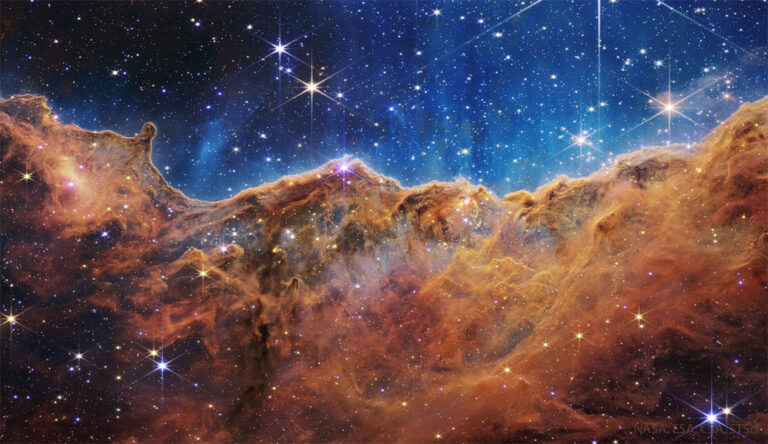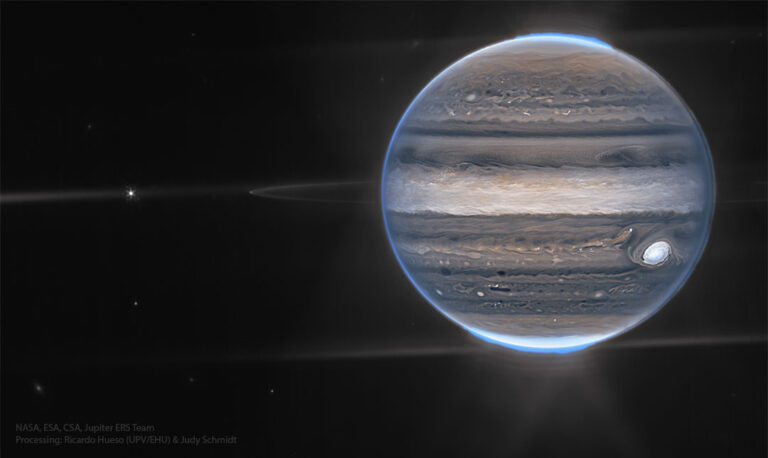韦伯影像: NGC 602里的恒星与云气柱
A starfield is shown featuring many stars in the center and many pillars of interstellar dust around the edges pointing toward the center. The main image is in infrared light, and a rollover image from Hubble shows the same scene in visible light. Please see the explanation for more detailed information.
图中显示的星空中央有许多恒星,边缘周围有许多指向中心的星际尘埃柱。主图为红外光图像,哈勃望远镜的翻转图像显示了可见光下的同一场景。有关更多详细信息,请参阅说明。







